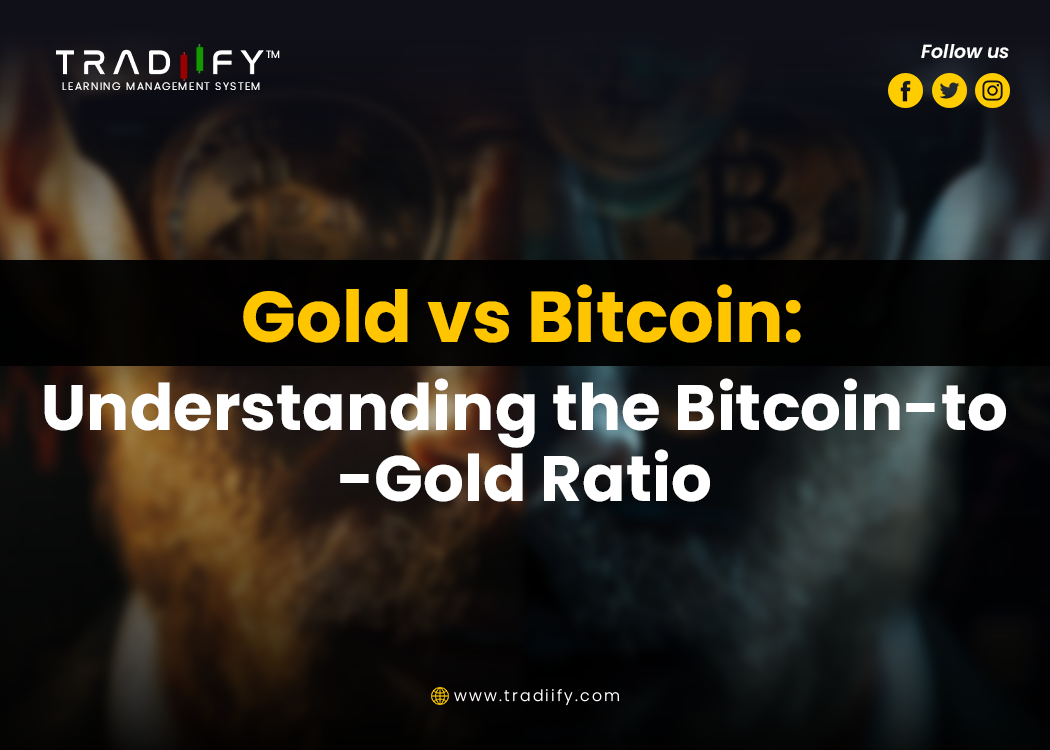
Gold vs Bitcoin: Understanding the Bitcoin-to-Gold Ratio
For centuries, gold has been regarded as the ultimate store of value, trusted by individuals, governments, and central banks. On the other hand, Bitcoin, born in 2009, has quickly emerged as a modern alternative often referred to as “digital gold.” While gold represents stability and tradition, Bitcoin symbolizes innovation and a shift toward a decentralized financial world. Comparing these two very different assets can be difficult, but one tool makes it easier—the Bitcoin-to-Gold Ratio (BGR). This ratio allows investors to measure the value of Bitcoin in terms of gold and provides valuable insights into market sentiment, relative performance, and portfolio strategies. Key Insights on the
Bitcoin-to-Gold Ratio
1. What is the Bitcoin-to-Gold Ratio?
The ratio is calculated by dividing the price of one Bitcoin by the price of one ounce of gold. For example, if Bitcoin is valued at $60,000 and gold at $2,000 per ounce, the ratio is 30, meaning one Bitcoin equals 30 ounces of gold.
2. Why Does It Matter?
The BGR is more than just a number—it highlights the changing relationship between a traditional safe-haven asset and a new digital one. A rising ratio shows Bitcoin gaining value faster than gold, while a falling ratio reflects gold’s strength, usually during times of global uncertainty.
3. Historical Trends
When Bitcoin first entered the market, the ratio was below 1 because Bitcoin was worth far less than gold. Over the years, with increasing adoption and speculation, the ratio soared past 60+ during Bitcoin bull runs, reflecting its rapid rise compared to the steadier movement of gold.
4. What Does It Signal for Investors?
Investors use the BGR as a tool for strategy:
A high ratio may suggest Bitcoin is overextended compared to gold, encouraging a defensive shift to gold.
A low ratio may indicate Bitcoin is undervalued, presenting opportunities for long-term accumulation.
5. Balancing Growth and Safety
Gold continues to serve as an anchor of stability and trust, especially during crises, while Bitcoin represents growth and digital innovation with higher volatility. Tracking the ratio helps investors decide how to balance both assets in their portfolios, blending security with potential upside.
Final Takeaway
The Bitcoin-to-Gold Ratio doesn’t predict the future, but it offers a valuable lens to compare two very different but important assets. Gold will likely remain the foundation of wealth preservation, while Bitcoin could shape the future of digital finance. For smart investors, the key lies not in choosing one over the other, but in understanding how both can complement each other—and using the ratio as a guide to strike the right balance.
🔗Learn more on Tradiify: www.tradiify.com
Comments (0)
Categories
Recent posts


Getting Started with Tradiify LMS: A ...
1 Aug 2024
5 Ways an LMS Can Revolutionize Your ...
1 Aug 2024.jpg)
How Tradiify LMS Supports Continuous ...
1 Aug 2024




